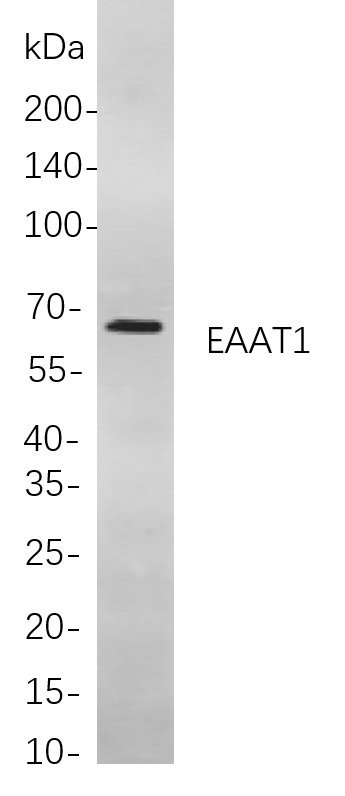

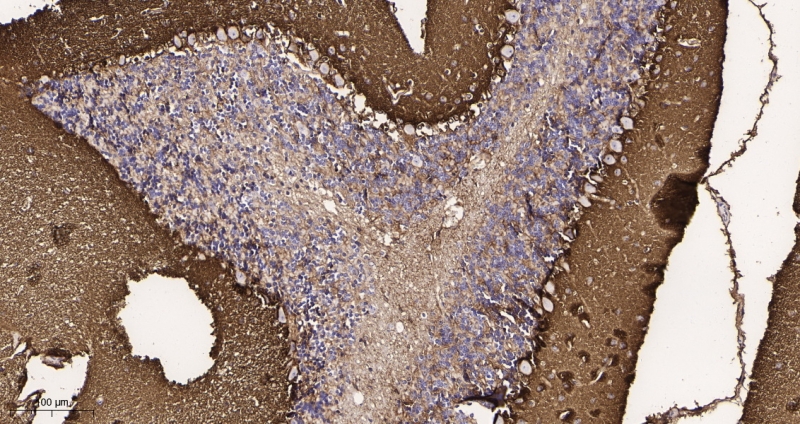
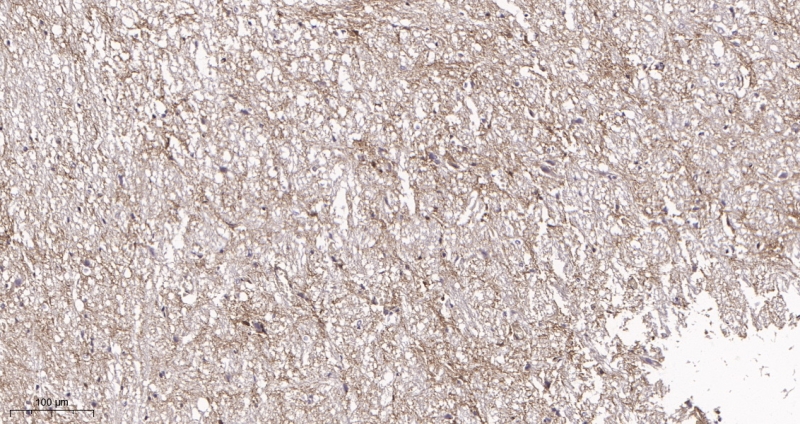
| WB | 1/500-2000 | Human,Mouse,Rat |
| IF | 1/200-1000 | Human,Mouse,Rat |
| IHC | 1/200-1000 | Human,Mouse,Rat |
| ICC | 1/200-1000 | Human,Mouse,Rat |
| IP | 1/50-200 | Human,Mouse,Rat |
| Elisa | 1/5000-20000 | Human,Mouse,Rat |
| Aliases | EA6; EAAT1; GLAST1; Slc1a3;;EAAT1 |
| WB Predicted band size | Calculated MW: 60 kDa ; Observed MW: 59 kDa |
| Host/Isotype | Rabbit IgG,Kappa |
| Antibody Type | Primary antibody |
| Storage | -15°C to -25°C/1 year(Do not lower than -25°C) |
| Species Reactivity | Human,Mouse,Rat |
| Immunogen | A synthesized peptide derived from human EAAT1 |
| Formulation | PBS, 50% glycerol, 0.05% Proclin 300, 0.05%BSA |
+ +
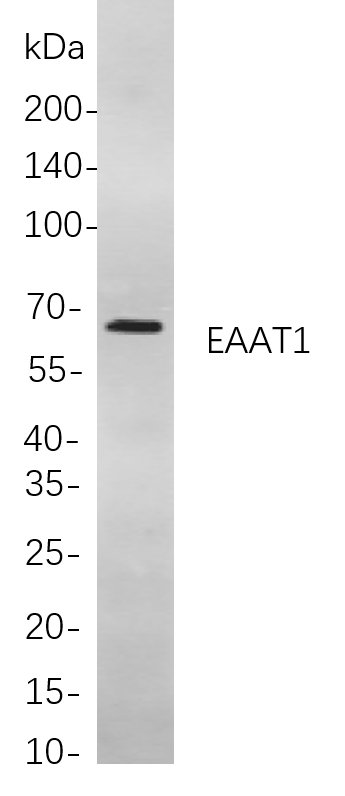
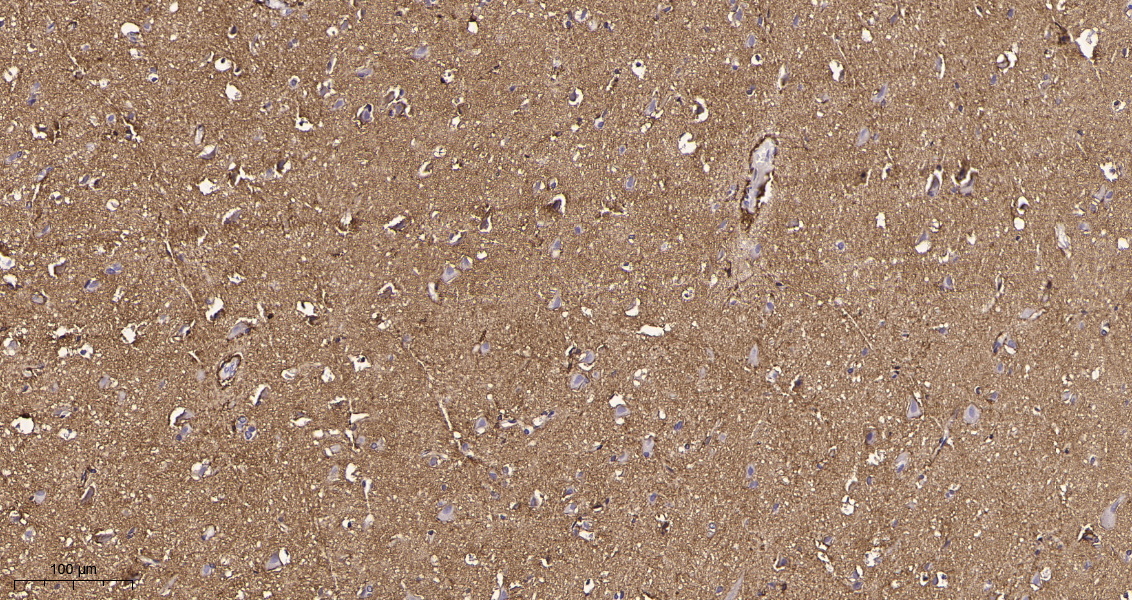

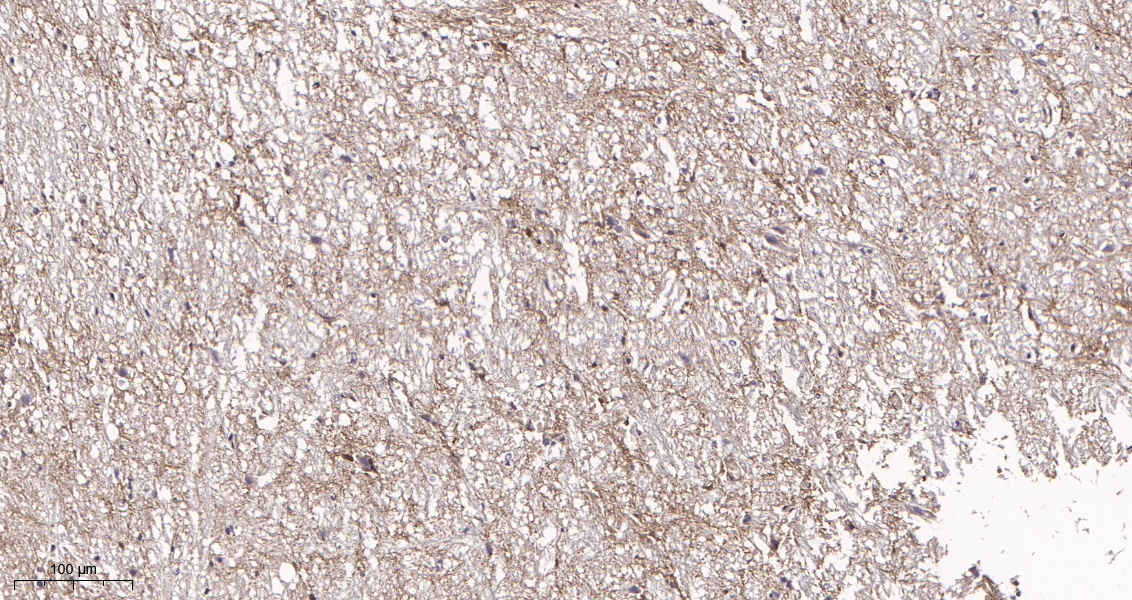
以下是关于EAAT1抗体的3篇参考文献及其摘要概括:
1. **文献名称**:*"Glutamate transporter EAAT1 expression in the rat cerebellum: Localization and regulation by thyroid hormone"*
**作者**:Lehmenkühler A, et al.
**摘要**:该研究通过免疫组化技术分析了大鼠小脑中EAAT1(GLAST)的表达分布,发现其高表达于星形胶质细胞,并揭示了甲状腺激素对其表达的调控作用,提示其在谷氨酸稳态中的关键角色。
2. **文献名称**:*"Selective loss of glial glutamate transporter EAAT1 in amyotrophic lateral sclerosis"*
**作者**:Rothstein JD, et al.
**摘要**:研究利用EAAT1抗体检测了肌萎缩侧索硬化症(ALS)患者脊髓中的蛋白表达,发现EAAT1选择性缺失与谷氨酸毒性相关,支持其作为神经退行性疾病的潜在治疗靶点。
3. **文献名称**:*"EAAT1 variants associated with schizophrenia: Functional characterization and pharmacological targeting"*
**作者**:de Vries EFJ, et al.
**摘要**:该研究结合Western blot和基因分析,发现精神分裂症患者EAAT1基因变异导致蛋白功能异常,并通过药物干预恢复其转运活性,为疾病机制提供了新见解。
这些文献涵盖了EAAT1抗体在定位、疾病机制及治疗研究中的应用,适用于神经科学及疾病模型领域的参考。
EAAT1 (Excitatory Amino Acid Transporter 1), also known as GLAST (Glutamate Aspartate Transporter), is a sodium-dependent transporter critical for regulating extracellular glutamate levels in the central nervous system. As a member of the SLC1A family, it is primarily expressed in astrocytes, where it facilitates the uptake of synaptic glutamate to prevent excitotoxicity and maintain neural homeostasis. Dysregulation of EAAT1 is implicated in neurodegenerative diseases (e.g., ALS, Alzheimer’s) and neurological disorders, making it a key research target.
EAAT1 antibodies are essential tools for studying its expression, localization, and function. These antibodies are widely used in techniques like Western blotting, immunohistochemistry, and immunofluorescence to visualize EAAT1 distribution in tissues or cultured cells. Specificity is crucial, as cross-reactivity with other EAAT subtypes (e.g., EAAT2/GLT-1) can occur; validation using knockout models or siRNA is recommended. Researchers employ these antibodies to investigate EAAT1 alterations in disease models (e.g., stroke, epilepsy) or under pharmacological modulation. Additionally, EAAT1’s role in cancer metabolism has spurred interest, as some tumors exploit glutamate transporters for growth.
When selecting EAAT1 antibodies, factors like species reactivity (human, rodent), clonality (monoclonal vs. polyclonal), and host species (rabbit, mouse) should align with experimental needs. Their applications span basic neuroscience, drug discovery, and diagnostic research, underscoring their versatility in both mechanistic and translational studies.
×